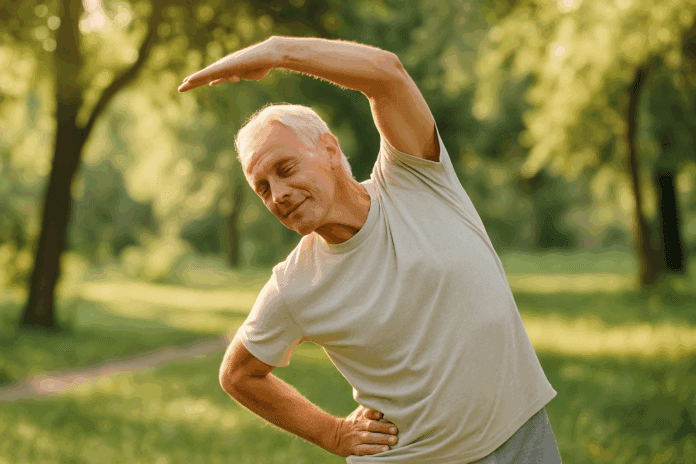For many adults navigating the challenges of aging, maintaining bone health and mobility becomes a top priority. As concerns about osteoporosis rise with age, so does the search for safe and effective interventions that can help preserve bone density, flexibility, and overall quality of life. Among the most frequently discussed methods is bone stretch exercise. But do bone stretch exercises really help? Are they a legitimate tool for preventing or managing osteoporosis, or is their reputation overstated? Understanding the science behind stretching, its impact on bone health, and the best strategies for integrating stretching exercises for osteoporosis into a long-term wellness plan is essential for anyone hoping to move freely and confidently well into later life.
You may also like : Best Stretches for Sore Legs and Tight Thigh Muscles: How to Relieve Upper Leg Pain Safely and Naturally
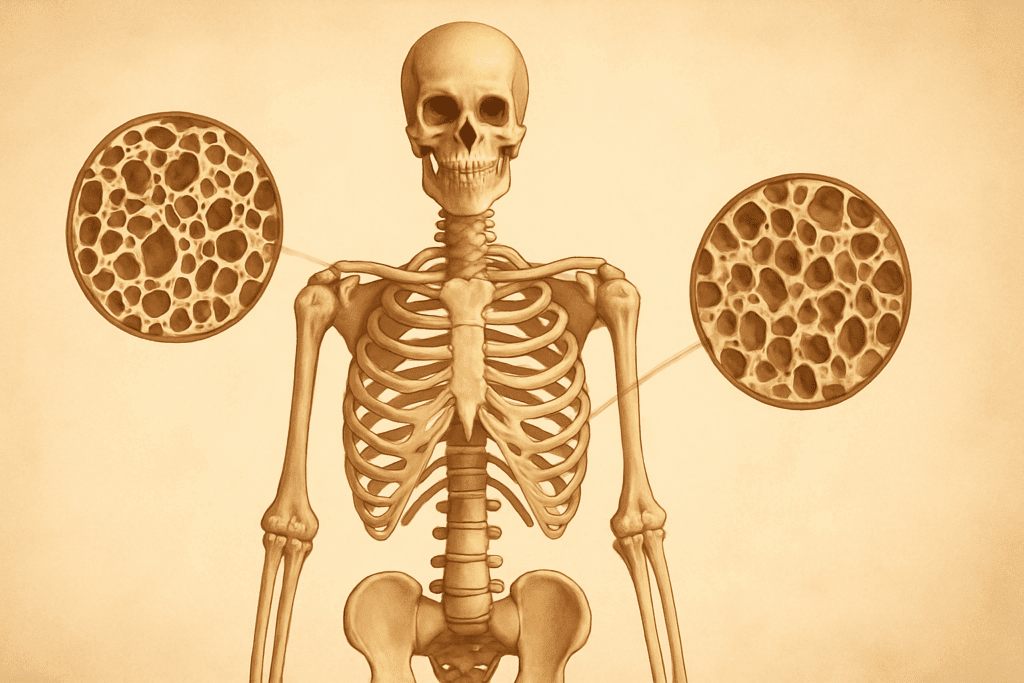
Understanding Bone Health and Osteoporosis
Osteoporosis is a condition characterized by decreased bone density and structural deterioration, making bones more fragile and prone to fractures. It affects millions globally, especially postmenopausal women and older men. Bone is living tissue, and like muscle, it remodels itself in response to physical stress. This biological adaptability means that movement—including stretching—can stimulate bone remodeling, albeit to a lesser extent than resistance or weight-bearing exercise.
While osteoporosis is often associated with low-impact strategies to prevent falls and injuries, emerging evidence suggests that certain carefully structured stretching exercises may support bone integrity. These stretches don’t build bone in the way high-impact activities do, but they do play a role in enhancing mobility, reducing stiffness, and improving posture, which indirectly protects bones by reducing fall risk. The real value of bone stretch exercises may lie in their ability to preserve joint range of motion and improve neuromuscular coordination, both of which are essential for maintaining independence.
How Stretching Affects Bones and Joints
Stretching primarily targets muscles, tendons, and connective tissue, but its indirect effects on bone should not be overlooked. When a stretch is applied, the surrounding soft tissues elongate, and tension is transmitted to the bone through the tendon-bone interface. This mechanical signaling, though gentler than the force exerted by resistance training, still contributes to bone adaptation. Stretching exercises for osteoporosis can help align the body’s structure, promote postural balance, and create a foundation for more rigorous activity, which in turn benefits skeletal strength.
Moreover, joint flexibility plays a critical role in injury prevention. Tight muscles can cause biomechanical imbalances that increase the risk of falls and fractures, especially in older adults. By improving range of motion in the hips, spine, and shoulders, stretching helps distribute forces more evenly throughout the body. This means that even minor movements, like reaching for an object or stepping sideways, become safer and more efficient. In this context, stretching doesn’t just support mobility—it enhances the body’s ability to respond dynamically to real-world physical challenges.
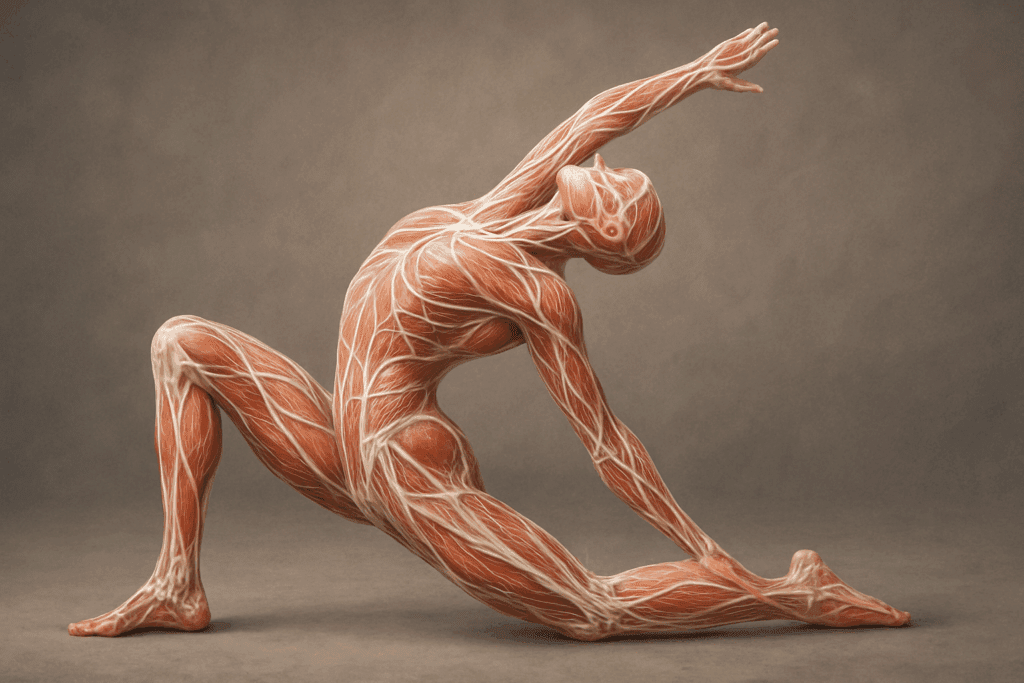
Fascia, Flexibility, and the Architecture of Movement
One of the most overlooked elements in discussions of bone stretch routines is the fascial system. Fascia is the three-dimensional web of connective tissue that envelops muscles, bones, nerves, and organs. It is highly innervated and richly vascularized, playing a critical role in structural alignment and movement efficiency. When the fascia becomes restricted due to aging, immobility, or injury, it can place abnormal tension on bones, contributing to discomfort and even imbalance.
Bone stretch exercises that target fascial release—such as slow, deep stretches held for 60 seconds or more—can help restore fluid dynamics and elasticity to this network. Techniques drawn from Yin Yoga, myofascial release, or ELDOA (a method designed to decompress spinal joints through posture-specific stretching) can be particularly beneficial for those with osteoporosis. While these stretches do not directly build bone mass, they do reduce biomechanical stress that may exacerbate osteoporosis-related degeneration.
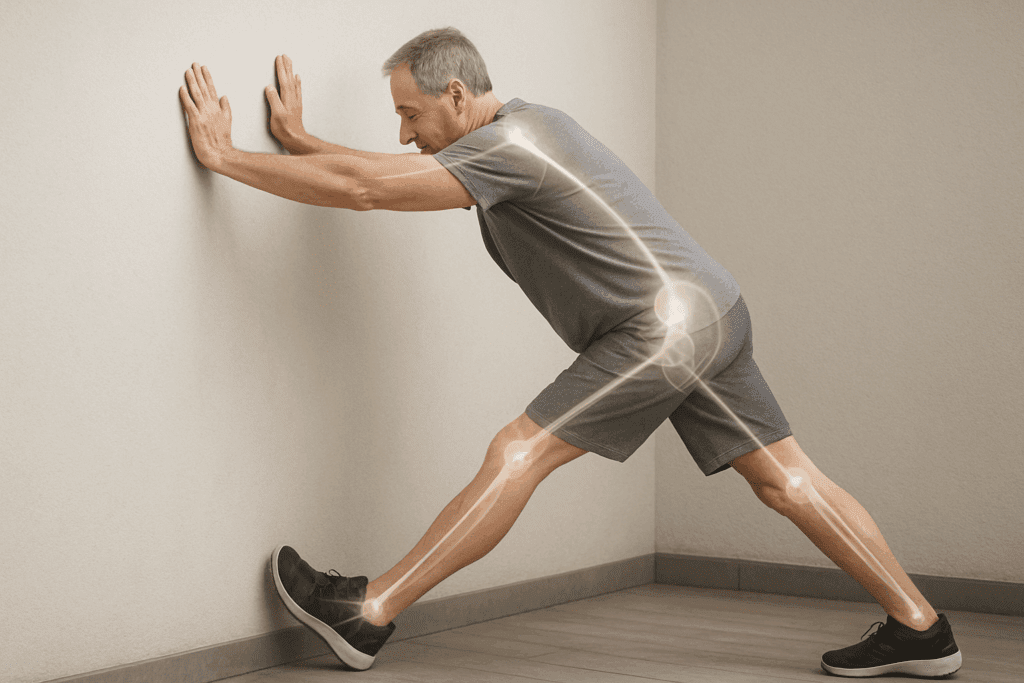
The Importance of Load Transmission in Stretching
A concept not often addressed in mainstream health writing is that of load transmission—the process by which forces travel through the musculoskeletal system. Bones respond to these forces by remodeling themselves, reinforcing areas of frequent stress. While this is well understood in resistance training, it also applies to stretching under load, such as passive stretching with body weight or gravity-assisted traction.
For instance, a standing hamstring stretch not only elongates the posterior chain but also introduces mechanical tension into the femur and pelvis. Similarly, stretches that involve the arms in overhead positions create tensile stress along the humerus and scapula, promoting adaptation in the shoulder girdle. When strategically applied, these stressors may serve as subtle stimuli for osteogenic (bone-forming) responses, especially when performed consistently.
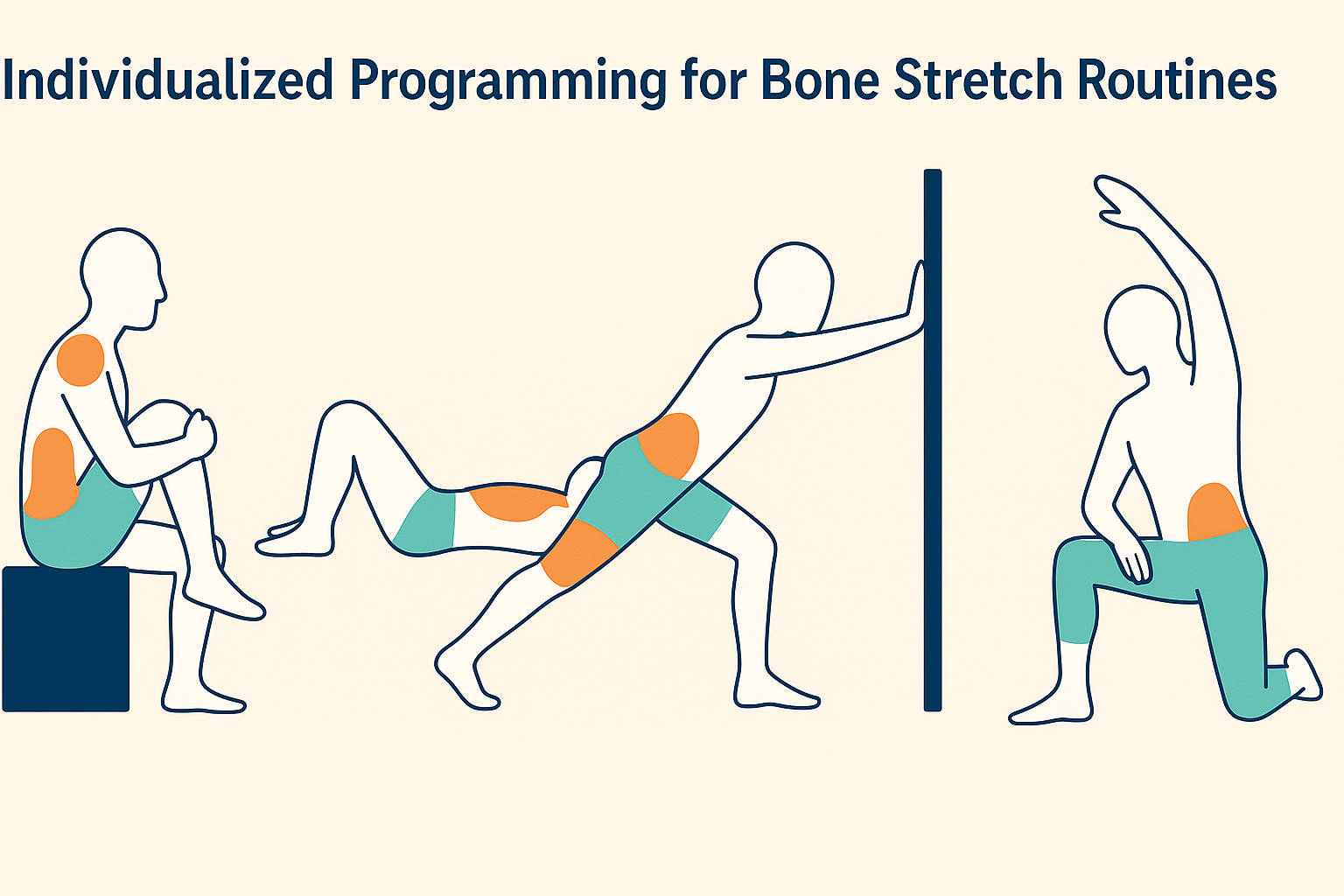
Individualized Programming for Bone Stretch Routines
The effectiveness of any bone stretch program depends on its alignment with the individual’s health status, bone density level, flexibility baseline, and history of injury or fracture. A one-size-fits-all approach can be ineffective—or even dangerous—for individuals with advanced osteoporosis. Instead, customized programming that includes progressive loading, supported positions, and clear contraindications is essential.
For example, a person with vertebral compression fractures should avoid flexion-based stretches but may benefit from lateral bends or supported back extensions. Someone with osteoporosis of the hip might prioritize psoas and iliacus stretches to reduce pelvic tension and improve alignment. Using assessment tools like the sit-and-reach test or postural analysis, physical therapists and certified exercise specialists can design safer, more targeted routines that honor the body’s limitations while still promoting meaningful progress.
The Role of PNF and Contract-Relax Techniques
Proprioceptive Neuromuscular Facilitation (PNF) stretching—particularly the contract-relax method—is another technique that can support individuals dealing with musculoskeletal decline. In this approach, a muscle is first contracted against resistance, then relaxed and stretched further. This method enhances flexibility more effectively than static stretching alone and may also engage deeper stabilizing muscles, promoting improved joint integrity.
PNF stretching may be adapted for older adults with osteoporosis by using minimal resistance and slow, controlled pacing. For example, contracting the hamstrings for five seconds before deepening a stretch can improve mobility without compromising bone safety. The added neuromuscular engagement also contributes to better motor control, which is essential for fall prevention.
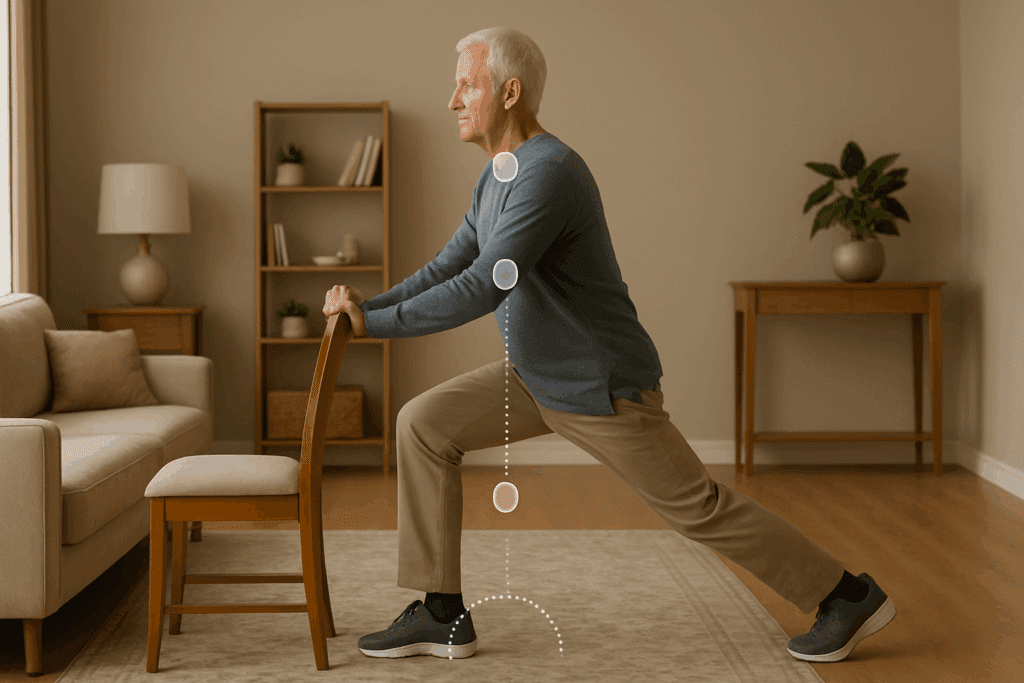
The Role of Bone Stretch in Fall Prevention
One of the most compelling reasons to incorporate bone stretch routines into a fitness regimen for osteoporosis is fall prevention. Reduced mobility and stiffness are major contributors to poor balance and coordination. When muscles lack flexibility, simple movements require more effort, leading to compensatory patterns that increase the likelihood of trips and slips. Stretching can address these issues by reeducating movement patterns and improving proprioception—the body’s internal sense of position.
Specific bone stretch movements that focus on the lower body, such as hip flexor and calf stretches, have been shown to improve walking stability and reduce fall risk. Meanwhile, thoracic spine mobility work can correct kyphotic posture, which is common in individuals with osteoporosis and often associated with back pain and decreased lung capacity. Stretching the hamstrings and glutes can restore pelvic alignment, contributing to a more upright stance and balanced gait. These are not trivial gains. When the risk of hip fracture rises exponentially after a fall, even small improvements in mobility and postural control have major implications for quality of life.
Balance Between Mobility and Stability
One of the most essential concepts for anyone designing a stretching routine for bone health is the interplay between mobility and stability. While the former ensures that joints can move through their full range, the latter ensures control over that movement. Overemphasizing flexibility at the expense of stability can increase injury risk, especially in osteoporotic individuals with already-compromised bone integrity.
This balance is achieved through integrated programming that includes core stabilization, glute engagement, and scapular control. A good example is combining a spinal twist with gentle abdominal bracing, ensuring that the vertebrae remain supported. Similarly, performing a hip stretch while activating the glutes can reduce pelvic torsion and support proper alignment. When mobility is developed in concert with muscular control, the risk of overstretching or joint instability is minimized.

Stretching’s Role in Hormonal and Metabolic Regulation
Emerging research also suggests that regular flexibility training may influence hormonal and metabolic systems. Stretching has been associated with reduced cortisol levels, improved insulin sensitivity, and enhanced circulation. These effects, though modest compared to aerobic exercise, may still hold meaningful benefits for those with osteoporosis, especially postmenopausal women who experience hormonal shifts that accelerate bone loss.
Gentle, breath-based stretches that engage the parasympathetic nervous system help regulate the hypothalamic-pituitary-adrenal (HPA) axis, supporting better sleep, mood stability, and metabolic homeostasis. Given that poor sleep and high cortisol are linked to increased bone resorption, the indirect hormonal regulation offered by stretching should not be overlooked in any osteoporosis prevention or treatment strategy.
Environmental Considerations and Supportive Tools
The effectiveness of stretching exercises for osteoporosis can be influenced by the environment in which they are performed. A safe, supportive, and sensory-rich space can enhance body awareness and reduce the risk of injury. Simple additions such as a non-slip mat, a supportive wall, or a soft bolster can make a significant difference in both the physical and emotional experience of stretching.
Supportive tools like resistance bands, foam rollers, and yoga blocks allow for greater customization of stretch depth and direction. For example, a strap can help an individual with limited flexibility perform a seated hamstring stretch without strain. A foam roller can be used to gently mobilize the thoracic spine, encouraging upright posture. By adapting the environment and tools to the individual, stretching becomes more accessible and enjoyable, increasing adherence over time.

Stretching in Post-Fracture Rehabilitation
For those recovering from fractures—whether vertebral, femoral, or wrist-related—stretching plays a different but equally important role. During the initial phase of healing, immobilization often leads to stiffness and loss of joint integrity. Once medical clearance is obtained, gentle stretching can be introduced to restore range of motion, stimulate circulation, and reduce scar tissue formation.
Post-fracture bone stretch routines must be meticulously planned in collaboration with physical therapists. Passive stretching, assisted movements, and aquatic therapy can be effective transitional strategies before progressing to more active flexibility work. As healing progresses, stretching helps reclaim functional independence by preparing the joints and muscles for activities of daily living.
Does Stretching Keep Your Bones Loose?
The phrase “does stretching keep your bones loose” might sound misleading at first glance, but when examined through the lens of biomechanics and physiology, it points to an important concept: mobility. Bones themselves are not meant to be “loose,” but the structures that support them—muscles, ligaments, and fascia—can become tight or restricted over time. Stretching serves to maintain pliability in these tissues, reducing compressive forces on the joints and allowing the skeletal system to move in harmony.
In this context, the idea that stretching keeps your bones loose refers to the preservation of normal joint mechanics. When surrounding muscles are supple and balanced, the joints can move through their full intended range without compensatory strain. This helps prevent wear-and-tear injuries like osteoarthritis and can slow the degenerative processes that accompany osteoporosis. So, while the bones themselves remain stable, stretching ensures that they are not subject to abnormal stress, thereby contributing to overall musculoskeletal longevity.
Safe Stretching Strategies for Osteoporosis
When selecting stretching exercises for osteoporosis, safety is paramount. The risk of fracture means that individuals must approach stretching with care, avoiding ballistic or overly aggressive techniques. Static stretching—holding a position for 20 to 30 seconds without bouncing—is generally the safest and most effective method. This type of stretching allows time for the muscles to relax and elongate, improving flexibility without placing undue stress on the bones.
Stretching should focus on the spine, hips, shoulders, and legs, as these areas are most affected by age-related stiffness. Spine-friendly stretches, such as gentle cat-cow movements or supported spinal twists, can counteract the rounded posture that develops in many older adults. Hip flexor and quadriceps stretches help open the front of the body, promoting better alignment and reducing lumbar stress. Calf and hamstring stretches improve stride length and walking efficiency, both of which are essential for fall prevention.
It’s also essential to tailor stretching routines to individual limitations. People with severe osteoporosis or a history of fractures should consult with a physical therapist before beginning any new exercise program. A therapist can guide modifications and recommend props like yoga blocks, straps, or wall support to make stretches accessible and safe.
Bone Stretch Techniques That Support Mobility
A well-rounded bone stretch program integrates techniques that support not only muscle lengthening but also fascial release and neuromuscular control. Fascia—the connective tissue that weaves through and around muscles—can become stiff and adherent with age, contributing to immobility and discomfort. Myofascial stretching, often combined with deep breathing and mindfulness, enhances circulation and tissue hydration, making movement more fluid.
Dynamic stretching, which involves moving gently in and out of a stretch, can be beneficial as a warm-up or for individuals who tolerate movement better than stillness. For example, slow leg swings or arm circles activate joint receptors and prepare the body for activity. These dynamic motions are especially helpful before walking, gardening, or participating in other daily routines, as they mimic real-life functional movement patterns.
Stretching exercises for osteoporosis should also include a focus on spinal decompression. Hanging stretches using support bars, or simple floor exercises like knees-to-chest, can relieve pressure on vertebrae and reduce back pain associated with compression fractures. Paired with core stabilization work, these exercises foster a healthy balance between mobility and strength, which is the key to safe movement at any age.
When and How to Stretch: Practical Scheduling Tips
The timing and sequencing of stretches can influence their effectiveness. For individuals with osteoporosis, stretching should generally be performed daily, ideally at the same time to establish a consistent routine. Morning stretches can help alleviate overnight stiffness, while evening sessions can reduce muscular tension and promote better sleep.
It’s advisable to perform stretching after a brief warm-up—such as a short walk or a few minutes of light cardio—to increase tissue temperature and reduce injury risk. Post-workout stretching can also support recovery by flushing out metabolic waste and promoting circulation. For those using stretching as a standalone practice, pairing it with deep breathing or mindfulness enhances its physiological and psychological impact.
Scientific Insights Into Stretching and Bone Density
While stretching is not a substitute for weight-bearing activity in terms of increasing bone mineral density (BMD), research does support its role in promoting skeletal health indirectly. Studies have shown that individuals who engage in regular stretching as part of yoga or Pilates programs experience improvements in posture, balance, and mobility—factors that correlate strongly with reduced fracture risk. In fact, a 2016 study published in Topics in Geriatric Rehabilitation found that targeted flexibility training reduced fall frequency among older adults with osteopenia and osteoporosis.
Additionally, stretching can support adherence to more intensive exercise routines. Many individuals with osteoporosis experience stiffness or pain that makes strength training difficult. By improving range of motion and reducing discomfort, stretching helps make other forms of exercise more accessible. This synergistic effect can have profound long-term implications: when stretching helps a person stay active, it contributes indirectly to the maintenance of healthy bones.
Stretching as Part of a Holistic Bone Health Plan
The most effective approach to osteoporosis management is multifaceted, combining stretching with resistance training, balance work, and nutritional support. Stretching serves as the connective tissue—both literally and metaphorically—between these elements. It improves circulation, facilitates recovery, and enhances body awareness, making all other interventions more effective.
Calcium and vitamin D remain foundational for bone health, but without movement, their benefits are limited. Stretching supports the kind of functional movement that gets people out of chairs, up stairs, and across rooms. It is the practice that prepares the body to engage with the world, which in turn helps maintain bone strength through real-life mechanical loading. In this sense, stretching exercises for osteoporosis are not simply passive tools—they are preparatory rituals that enable proactive living.
Mind-Body Benefits of Stretching for Older Adults
The benefits of stretching extend beyond the musculoskeletal system. For many individuals, particularly older adults managing chronic conditions, stretching serves as a gateway to mindfulness, relaxation, and emotional resilience. The slow, intentional nature of stretching encourages deeper breathing, which stimulates the parasympathetic nervous system and promotes a sense of calm. This can be especially valuable for those coping with the stress and anxiety that often accompany a diagnosis of osteoporosis.
Practices like yoga and tai chi, which integrate stretching with breath and movement awareness, have been shown to reduce cortisol levels, improve sleep, and enhance mood. These mind-body effects are not incidental—they contribute to better adherence, greater self-efficacy, and a more positive relationship with one’s body. In this way, bone stretch practices become more than just physical exercises; they evolve into holistic wellness rituals.
What to Avoid When Stretching With Osteoporosis
While stretching offers numerous benefits, not all stretches are appropriate for individuals with osteoporosis. Forward flexion movements, especially those that round the spine under load (such as toe touches or sit-ups), can increase the risk of vertebral fractures and should be avoided. Twisting exercises should be performed gently and never pushed beyond a comfortable range. It’s also advisable to avoid any rapid, bouncing movements (ballistic stretching), which can strain already weakened connective tissue.
Instead, individuals should focus on alignment, breath control, and muscle engagement. Stretches that encourage spinal lengthening, lateral bending, or supported extension are usually safer and more effective. Consulting with a certified physical therapist, yoga instructor, or medical exercise specialist can help identify appropriate stretches based on personal history, physical condition, and therapeutic goals.
The Verdict: Do Bone Stretch Exercises Really Help?
So, do bone stretch exercises really help? The answer is yes—but with context. While stretching alone will not reverse osteoporosis or significantly boost bone density, it plays a pivotal role in preserving mobility, reducing fall risk, and supporting a balanced, active lifestyle. When integrated with resistance training, proper nutrition, and mindful movement practices, stretching becomes an essential pillar of bone health.
The keyword question—”does stretching keep your bones loose”—can now be reframed through science and experience. Stretching keeps the body moving with grace and ease. It reduces the rigidity in muscles and connective tissues that can otherwise make movement stiff and dangerous. In doing so, it indirectly supports skeletal well-being, especially when part of a comprehensive program of stretching exercises for osteoporosis.
Frequently Asked Questions (FAQ): Bone Stretch Exercises for Osteoporosis and Mobility
1. Can bone stretch routines help improve posture in people with osteoporosis?
Yes, consistent bone stretch routines can significantly improve posture, especially in those experiencing spinal changes due to osteoporosis. As bones become more porous, spinal alignment may shift, often leading to a hunched posture known as kyphosis. Stretching exercises that gently elongate the spine and open the chest can restore balance by retraining postural muscles. These movements reduce compensatory tension in the neck and lower back, enhancing upright stance and breathing capacity. Regular use of stretching exercises for osteoporosis can even reduce the visual appearance of spinal curvature when combined with core strengthening.
2. How does stretching influence the way our bones respond to gravity and daily movement?
Stretching enhances how the body distributes mechanical stress, allowing bones to experience more uniform loading during movement. A key aspect of bone stretch is its effect on fascia and tendon tension, which in turn influences how force is transmitted through the musculoskeletal system. When you stretch regularly, your body becomes more efficient at absorbing and redirecting these forces in a way that protects skeletal structures. This dynamic relationship is crucial in preventing stress fractures and joint degeneration. So while it may not directly increase bone mass, stretching helps bones stay responsive and well-aligned under everyday gravitational demands.
3. Does stretching keep your bones loose, or is that a myth?
While bones themselves don’t become loose or flexible, the surrounding soft tissues do. The phrase “does stretching keep your bones loose” refers more accurately to maintaining joint freedom and reducing soft tissue restrictions. Tight fascia and contracted muscles can limit range of motion and place abnormal stress on the bones. Stretching keeps the supporting structures supple, which promotes healthier joint mechanics and allows bones to move without compression or shearing. In this way, stretching contributes to functional bone mobility without literally affecting the hardness of bone tissue.
4. Are there specific types of stretching exercises for osteoporosis that are more effective than others?
Absolutely. Not all stretching techniques are equally safe or beneficial for individuals with osteoporosis. Static stretches held with support are typically the safest, while dynamic movements like tai chi and certain yoga poses add a functional balance component. Bone stretch exercises that target the hips, thoracic spine, and shoulders often yield the best results for posture and stability. In contrast, ballistic or forced stretches may be risky and are generally discouraged. The most effective programs emphasize breath, slow progression, and control to ensure that joints and bones remain protected.
5. Can bone stretch routines help with chronic pain related to osteoporosis?
Yes, bone stretch routines can play an important role in pain management for those with osteoporosis. Stretching alleviates muscle tension, especially in areas prone to guarding or compensation due to altered posture or spinal compression. These gentle exercises can improve circulation, lubricate joints, and release fascial restrictions that often contribute to pain. Stretching exercises for osteoporosis, when practiced mindfully, also stimulate the parasympathetic nervous system, which can reduce pain perception over time. While not a replacement for medical treatment, stretching can offer a safe, empowering way to self-manage discomfort.
6. How do I safely progress in a bone stretch program if I have limited flexibility?
If you’re starting with limited flexibility, gradual progression is key. Begin with stretches that use external support such as walls, chairs, or resistance bands to reduce strain and maintain alignment. Bone stretch programs should not push into pain but rather explore the edge of comfortable movement. Over time, micro-adjustments and breath-guided stretching can improve your range without risking injury. Many older adults find that committing to 10–15 minutes daily leads to consistent, gentle gains. Stretching exercises for osteoporosis are more about consistency and precision than depth or intensity.
7. What role does stretching play in fall prevention for older adults with osteoporosis? Stretching enhances proprioception and balance, two critical factors in fall prevention. As we age, joint stiffness and muscular tightness can make quick corrective movements more difficult. By incorporating bone stretch routines that target the ankles, hips, and spine, older adults improve both mobility and neuromuscular responsiveness. Improved range of motion also makes it easier to navigate obstacles, get up from chairs, and maintain stability during transitions. Many physical therapists recommend combining stretching exercises for osteoporosis with balance drills to build an integrated fall-prevention plan.
8. How does stretching compare to strength training for bone health support?
Stretching and strength training serve different but complementary purposes. Strength training provides the high-impact loading required to stimulate new bone growth, particularly at the hip and spine. However, stretching enhances alignment, joint integrity, and movement fluidity, making strength exercises safer and more effective. A well-designed bone stretch routine can act as a warm-up or cool-down for weight-bearing activities, reducing the risk of strain or improper form. When integrated thoughtfully, stretching supports long-term adherence to strength training by minimizing soreness and maximizing joint comfort.
9. Is there any new technology that enhances stretching for osteoporosis management? Yes, emerging technologies like digital flexibility trackers, biofeedback apps, and smart yoga mats are making stretching safer and more personalized. These tools can guide users through bone stretch routines while monitoring joint angles and providing real-time corrections. Some wearable devices also alert users if movements fall outside of a safe range for their age or condition. For individuals managing osteoporosis, these innovations reduce guesswork and promote consistency without overexertion. As accessibility improves, such tools could make stretching exercises for osteoporosis more engaging and tailored to individual needs.
10. Can mental health and stress levels influence the effectiveness of stretching routines for bone health?
Mental health plays a surprisingly significant role in how well the body responds to stretching. Chronic stress leads to muscle guarding and elevated cortisol, both of which can undermine flexibility and increase bone resorption. When practiced in a calm, mindful setting, stretching lowers sympathetic nervous system activity and supports emotional regulation. This emotional benefit enhances adherence to bone stretch routines and improves overall body awareness. Additionally, routines that focus on breath and gentle movement can promote a sense of agency and calm, which are invaluable for people managing osteoporosis-related anxiety or fear of movement.
Conclusion : Stretching for Longevity, Bone Health, and Graceful Aging
Bone stretch exercises, when thoughtfully selected and mindfully performed, are more than just physical movements—they are acts of self-preservation and self-respect. They enhance mobility, support posture, and promote longevity by fostering a resilient and responsive musculoskeletal system. For anyone asking, “do bone stretch exercises really help,” the evidence speaks clearly: yes, they do, especially when used to complement a broader strategy for healthy aging.
Whether you’re managing a diagnosis of osteoporosis or simply seeking ways to stay agile and confident as you grow older, stretching offers a low-risk, high-reward path forward. With consistent practice, the gentle elongation of limbs and spine becomes a daily reminder of the body’s adaptability, strength, and grace. In this way, stretching serves as both a preventative measure and a celebration of movement—a commitment to aging with vitality, independence, and freedom.

